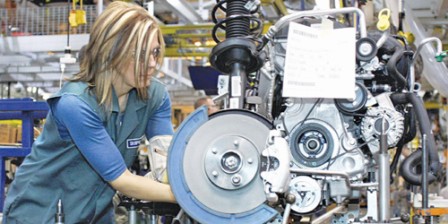US MANUFACTURING PMI SLOWS IN APRIL
US manufacturing continued to growth at a sluggish pace in April, partly hurt by the strong dollar but supported by cheap energy, the Institute for Supply Management said Wednesday.
But, in the separate University of Michigan consumer survey, consumer optimism surged last month to its second highest level since 2007, helped by gains in jobs and incomes.
The ISM purchasing managers index for the manufacturing sector was unchanged from March at 51.5, and remained well below the 12-month average of 55.2.
A reading above 50 on the PMI, based on a survey of 18 manufacturing industries, indicates expansion.
Two of the 18 sectors said activity had contracted in the month: apparel, leather and related products; and computer and electronic products.
There were some signs of improvement in the month: new orders and production both picked up pace, and prices gained.
But employment and inventories both contracted.
Exports surged but that was in part related to clearing the backlog from West Coast ports after the end of a three-month strike in late February.
“International shipments still being delayed by the strikes,” said one survey respondent from the computer industry.
“Foreign exchange is reducing revenue, but volume has remained consistent,” said one from the chemicals sector.
The University of Michigan’s consumer sentiment index rose to 95.9 from 93.0 in March, strong though still below the post-2007 record of 98.1 in January.
The rise was supported by favorable views of the jobs market, but restrained as consumers remain less sure of their financial situation, “still far below the peaks recorded in earlier decades,” the survey reported.
“Consumer optimism has become increasingly dependent on the persistence of low inflation and low interest rates as well as slowly improving prospects for jobs and incomes.”
Meanwhile the Commerce Department reported that US spending on construction in the first three months of the year — an important sector of the economy — was up 3.2 percent over a year earlier, after a slow 0.6 percent monthly gain in March.
Spending on private construction slipped in March but public spending increased.
Related Posts

